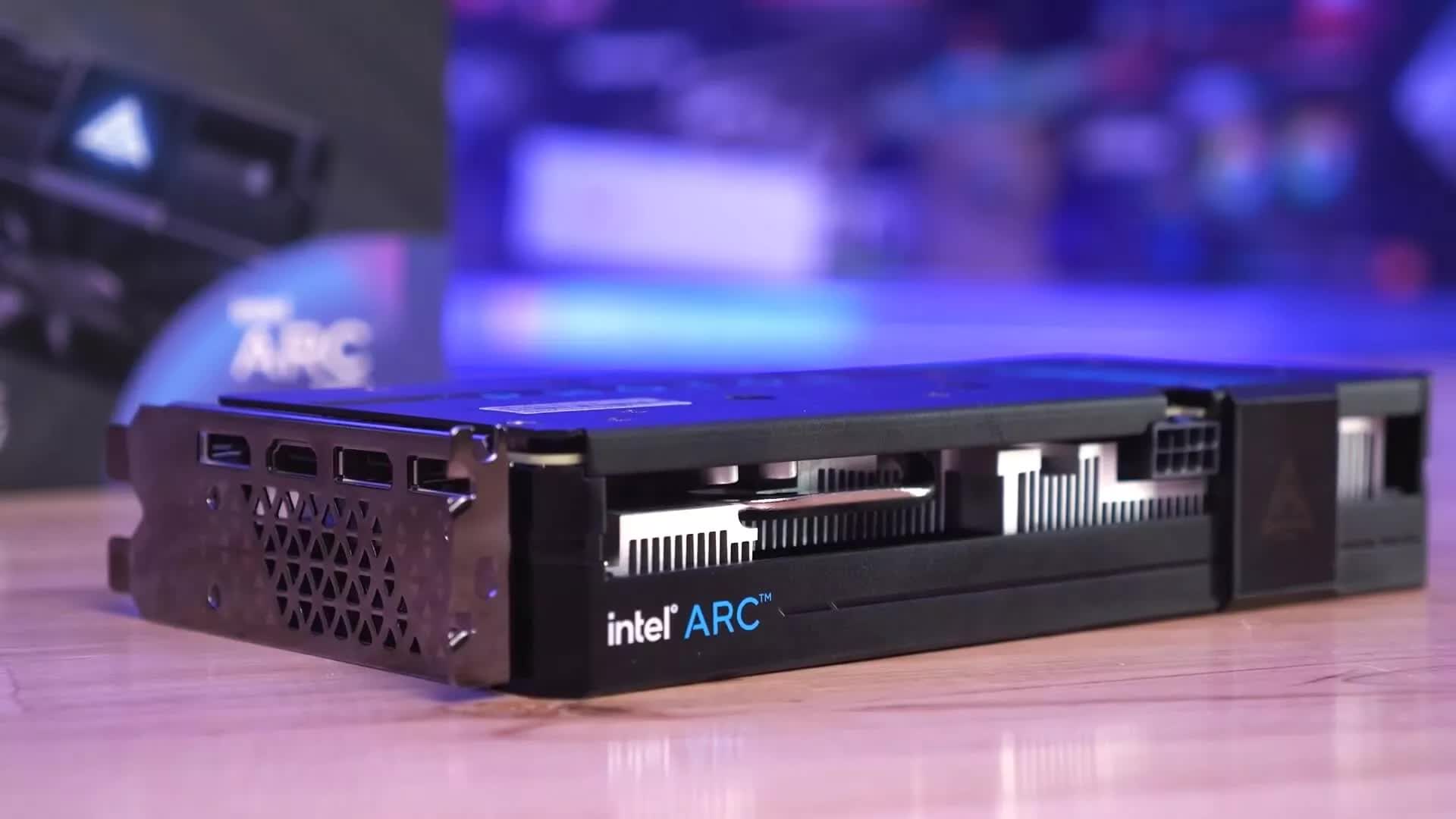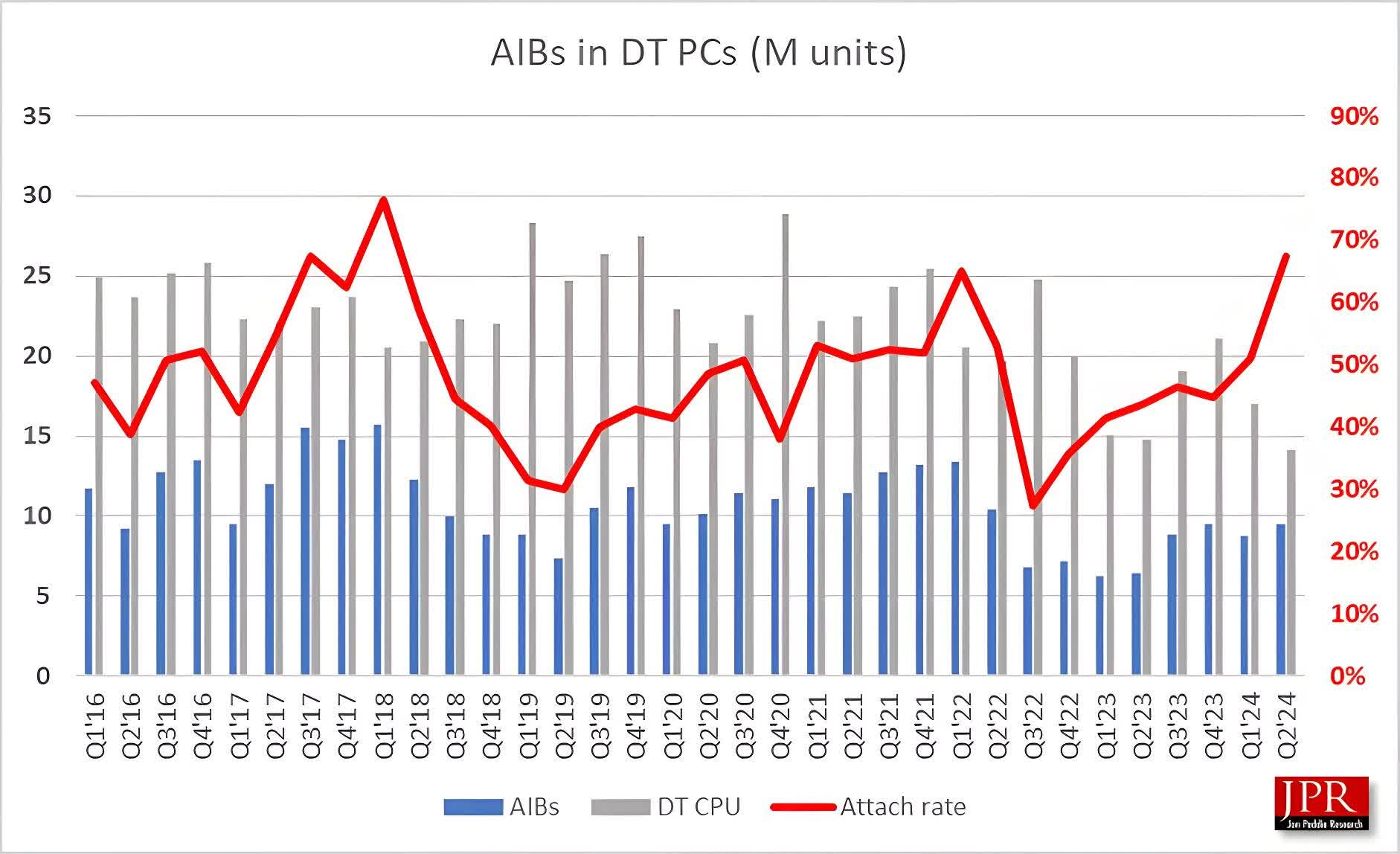winjer
Member

Intel has lost all of its dedicated GPU market share
According to a report from Jon Peddie Research, dedicated desktop GPU sales rose significantly in the second quarter of 2024 for everyone except Intel. Although the market...
 www.techspot.com
www.techspot.com
The two main players in the dedicated desktop graphics card market, Nvidia and AMD, enjoyed a positive quarter. Unfortunately, Intel failed to latch onto the upswing as it still struggles to break into the sector. The lack of movement in Intel GPUs certainly isn't helping as the company faces troubles elsewhere, but the next round of the AIB race is set to begin late this year or early next year.
According to a report from Jon Peddie Research, dedicated desktop GPU sales rose significantly in the second quarter of 2024 for everyone except Intel. Although the market is up overall, share didn't change from last quarter.
Shipments of AIBs reached approximately 9.5 million units, an increase of 9.4 percent from Q1 2024 and 48 percent from Q2 2023. The quarterly jump is well above average, indicating a strong recovery.
Market king Nvidia benefited the most, seeing a 9.7 percent quarterly rise and a 61.9 percent annual uplift. Furthermore, the company maintained its 88 percent market share from last quarter.
Meanwhile, although AMD's shipments only increased by three percent year-over-year, its quarterly improvement was similar to Nvidia's. Team Red also held onto its 12 percent market share from Q1.
Intel, though, has effectively been shut out, with sales remaining flat compared to last quarter. After entering the AIB market with its Arc Alchemist series in 2022, the company briefly achieved a four percent market share toward the end of that year, but it had evaporated by early 2024.
Desktop CPU-to-AIB attachment rate since 2016
Alchemist was supposed to provide an alternative to competing mid-range graphics cards. However, shipment delays put it behind the price-to-performance curve compared to Nvidia Ampere, Ada Lovelace, and AMD's RDNA 3 chips. The initial drivers also dragged performance significantly downward, though they have since improved dramatically.
All three AIB manufacturers are preparing new generations of GPUs. Nvidia's Blackwell architecture, likely to be named RTX 5000, is expected to debut at CES in January 2025 with high-end and enthusiast products likely costing over $1,000. AMD might introduce RDNA 4 (Radeon RX 8000) around the same time while focusing on much cheaper parts that could significantly improve on the latest available mid-range GPUs.



